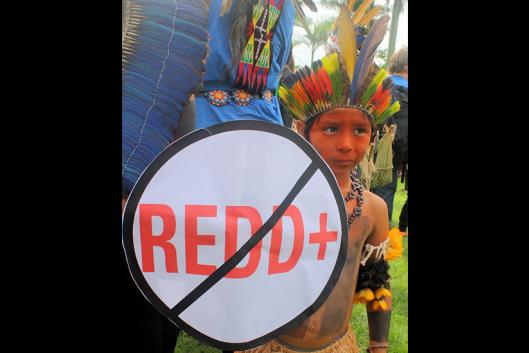In the state of Paraná, Brazil, a vast expanse of the Atlantic Forest, which covered the country's entire coastline 500 years ago and currently is seriously endangered, still survives. Traditional Caiçara, Quilombola and indigenous Guarani communities inhabit the area, and their ways of life are closely tied to the Atlantic Forest.
Fifty years ago, ranchers began moving into the area, clearing the forest and taking over the land to raise water buffalo.
In the 1990s, arrived projects that form part of the so-called Green Economy: the Boticário Foundation, run by the major Brazilian cosmetics company Boticário Group, purchased an area of forest to create the “Salto Morato Nature Reserve”, which spans more than 2,000 hectares.
Then came the Society for Wildlife Research and Environmental Education (SPVS) together with The Nature Conservancy, a big U.S.-based NGO. SPVS bought more than 18,000 hectares of forest and turned them into natural reserves for the purpose of carbon storage. SPVS received 18 million U.S. dollars in financing from three U.S. corporations: Chevron, General Motors and American Electric Power.These are corporations that pollute the environment and claim that by storing carbon in the forest, they are offsetting the pollution they cause.
These projects have had a great impact on the life of the traditional communities, most of whom do not have legal title to the land they occupy or the forests they use. Now, they no longer have the freedom to work the land as they used to, they can’t plant any more, they can’t raise animals any more.
Thirty or forty years ago the population in Guaraqueçaba was double or more what it is now, because everybody worked, there were many families that were able to work freely and feed themselves. But now, when everything became prohibited, most people went to the city, they went far away.
This is what local people told to the WRM team who went this year to visit the Caiçara, Quilombola and Guarani communities in order to get their own answers to the question: What do they think about this kind of Green Economy projects? What happens when communities organize and regain control of their land? as it happened in the case of the Rio Pequeno community, which with the help of the Rural Landless Workers Movement (MST), occupied an area that a rancher was planning to sell to SPVS. The families organized, established a camp and began to build a new tomorrow for their children.
Their testimonies are part of a documentary that shows that peoples like the Caiçaras, the Quilombolas andthe Guaranis have been the real protectors of the forest. As they say: “it wasn’t the supposed ecologists who preserved it. No, it was us, we took care of it in the past and we still take care of it today. We never destroyed anything, we never harmed the environment. On the contrary, we have always lived here, and all of the beauty here was preserved by us. Notbyanyonefromoutside.”
The video “Disputed Territory. The green economy versus community-based economies.A story of the peoples of the Atlantic Forest in southern Brazil” can be watched in English at
http://wrm.org.uy/Videos/Disputed_Territory_intro.html
